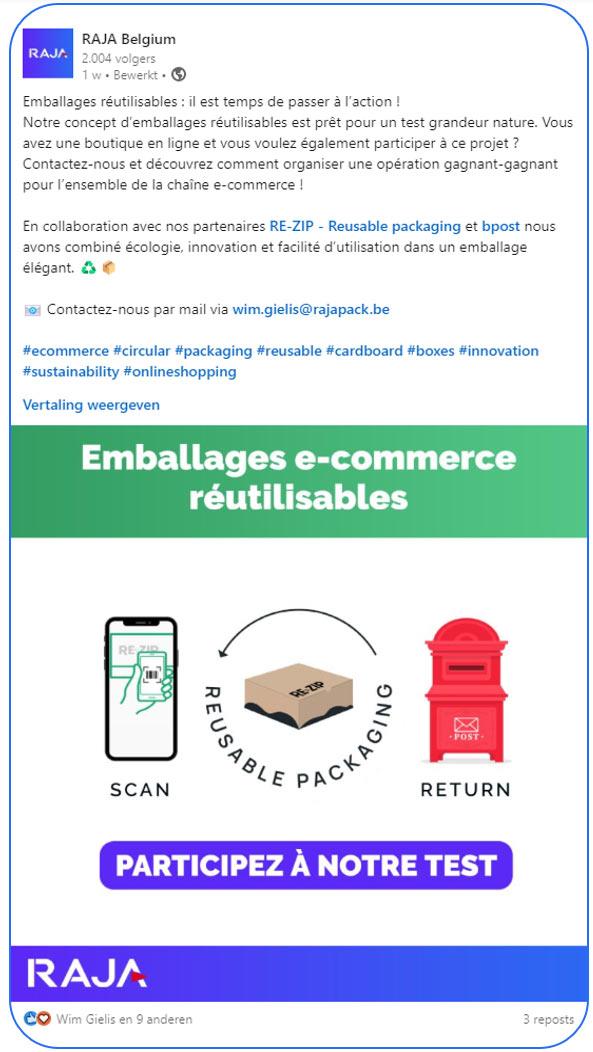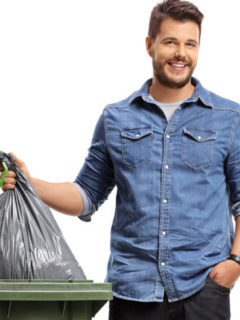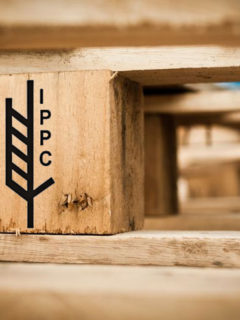Have you heard of the “PPWR”? It is an abbreviation for Packaging and Packaging Waste Regulation. It is a new legislative proposal from the European Commission, launched at the end of 2022. This ‘European Packaging Act’, as we call it here, will impose new rules on the way we package our products today. This is the first time that e-commerce packaging is explicitly mentioned in this context. All the more reason to analyse what impact this could have for online retailers and how RAJA can already help you in this respect. Read on and prepare yourself for the future.
1. What does the EU packaging law mean?
Specifically, the Packaging and Packaging Waste Regulation (PPWR) should ensure that packaging is more recyclable and reusable by 2030. The emphasis is on the idea of circularity: today’s packaging should be able to be used as packaging tomorrow. It also considers measures to reduce packaging waste and make materials less complex. For example, by better separating plastic and paper.
This is currently a legislative proposal. It will then have to be transformed into a regulation. Such a regulation is a legal and binding requirement for all EU Member States to create uniform rules for the whole market. Once in force, PPWR will affect ALL retailers in the e-commerce sector in the European Union.
In Belgium, the packaging market is fortunately moving in the right direction. In recent years, many legislative requirements have been proactively addressed. You will find these new, future-oriented products in theRAJA assortment anyway – because as a pioneer in the ecological transition, we like to be at the forefront. Read on and find out how RAJA can prepare you for the European packaging law now.
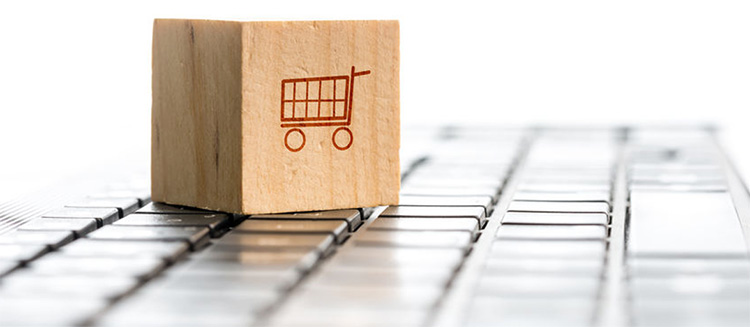
2. How did PPWR come into being?
The European packaging law did not come out of the blue, on the contrary! It is the result of years of reflection aimed at making the European economy more sustainable and environmentally friendly. Below, we outline the main steps in this process.
- 2015 : Following the Paris Agreements, international commitments have been put in place to ensure the sustainability of our planet. The aim is that together we emit less CO2. The effects of these agreements are seeping into our daily lives year after year; just think of the increase in the number of electric cars or the ban on single-use plastics.
- 2019 : Following the Paris Agreements, the EU has launched theGreen Deal, a list of initiatives to give Member States a more modern and cleaner economy. The aim is to reduce net greenhouse gas emissions to zero by 2050. It is also about decoupling economic growth from the use of external resources. The Green Deal has been translated for local and regional authorities, among others. At the Flemish level, RAJA Belgium has been actively involved since 2021 through regular consultations with the highest political officials.
- 2022 : the world of packaging and its waste will also be addressed. As part of the Green Deal, the EU has launched a proposal for new legislation in November 2022, the Packaging and Packaging Waste Regulation. It is clear that packaging is necessary for our economy, but the way we deal with it must be adapted to the needs of the future. With RAJA’s initiatives, we can continue to be a reliable partner for all types of businesses in this future.
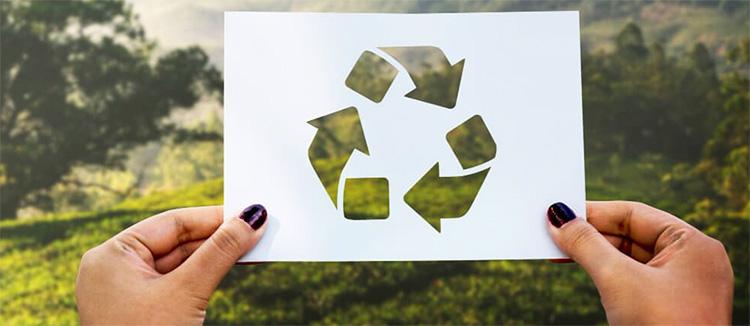
3. RAJA: your partner for European packaging law
In future, packaging or packages that do not comply with the European Packaging Act will no longer be allowed to be sold. For e-commerce companies, this is an additional point to consider. As a website owner, are you feeling the pinch? Don’t worry! Below we present some RAJA packaging with which you can already anticipate most of the requirements of the packaging law.
► 1. Choose packaging with a circular design
PPWR requirement: this European law focuses strongly on the shape and composition of packaging. Circularity plays an important role in this. The key is to be able to easily reprocess today’s packaging into tomorrow’s packaging. Packaging that is easy to sort and recycle into a single waste stream is preferable. This is known as ‘single material packaging’. For example, a package consisting of only paper and cardboard can be sorted in its entirety and reprocessed into a new paper product. In this way, we can easily complete the raw material cycle. Paper also excels in this respect, as demonstrated by its high recycling rate in Europe (up to 88% and more in the Benelux).
RAJA’s solutions: RAJA currently offers 2,500 products made entirely of paper or cardboard. This improves the short-term circularity of most packaging. These mono-material packages are not a coincidence. They are the result of constant innovation and close consultation with our suppliers. For almost all traditional plastic packaging we can already offer a paper alternative.
With the following new products from RAJA, you can put together a package made entirely of a single material that is easy to sort: paper!
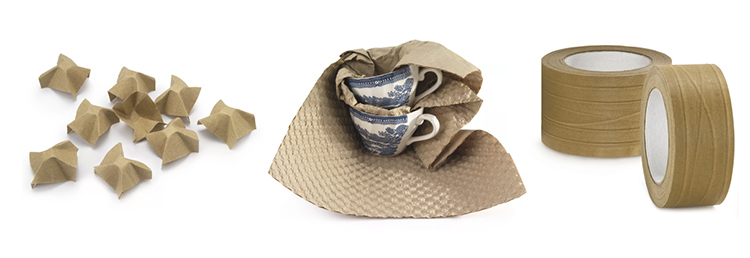
► 2. Opt for recycled materials
PPWR requirement: from 1 January 2030, all packaging must meet new recycling thresholds. The exact nature of these thresholds depends on the type of packaging. For plastics, for example, this means that each package must contain a minimum amount of post-consumer recycled material. These are plastics derived from the recycling of household waste.
RAJA’s solutions: in the composition of plastic packaging, RAJA is increasingly replacing virgin materials with (partially) recycled materials. In total, this already concerns some 500 plastic products, ranging from bags to bubble wrap to air cushions. Our aim is to stimulate the demand for this raw material through a high percentage of recycled plastic in our products. The increase in demand for recycled plastic is also an incentive for better sorting of plastic. In this way, we are several years ahead of the legal framework, which is currently in full development.
Good to know: at RAJA we consciously choose completely transparent recycled plastic. Why do we do this? It is not uncommon to see bubble wrap or bags to which the manufacturer has added a green dye. This green appearance clearly indicates to the consumer that the plastic is made entirely (or partly) from recycled material. The disadvantage is that the plastic is more difficult to recycle afterwards. This is because the green dye ‘pollutes’ the process. For this reason, environmentally conscious people always opt for fully transparent packaging made from recycled plastic. Below are some examples of popular plastic packaging with a high percentage of recycled material:
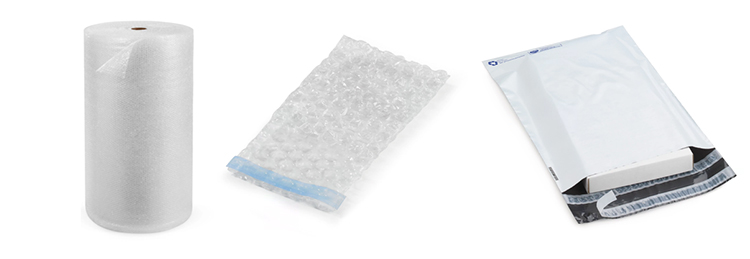
Equally important are our products made from recycled paper and cardboard. Almost all RAJA cardboard boxes contain a high percentage of recycled material (on average 70%). When selecting new products, this recycling percentage is always an important factor for us. In this way, we are already anticipating the requirements of tomorrow. In addition, paper packaging materials are easy to sort after use. Did you know that cardboard can be recycled up to 10 times? Once the boxes have been disposed of, they can easily be turned into toilet paper or newsprint, for example.
► 3. Avoid unnecessary packaging clutter
PPWR requirement: the European packaging law requires that the weight and volume of a package be kept to a minimum, without compromising its safety or functionality. In other words, no packaging should be marketed with unnecessary spaces, such as double walls or double bottoms to simulate a larger product volume. After the introduction of this law, a maximum of 40% empty space will be allowed for bundled or e-commerce packaging.
RAJA’s solutions: Under the motto ‘every product deserves a tailor-made package’, RAJA offers a range of 1,250 case formats and 1,300 bag formats. This means that for every type of product there is a suitable packaging. The result? Less empty space in the packaging and less excess cushioning material. RAJA also encourages the use of shipping bags as an alternative to crates. The bags offer excellent protection for fragile products and are considerably more compact than a crate. This saves you packaging material and transport costs (= the more compact the packaging, the lower the transport volume).
Select the right packaging for your product with our services:
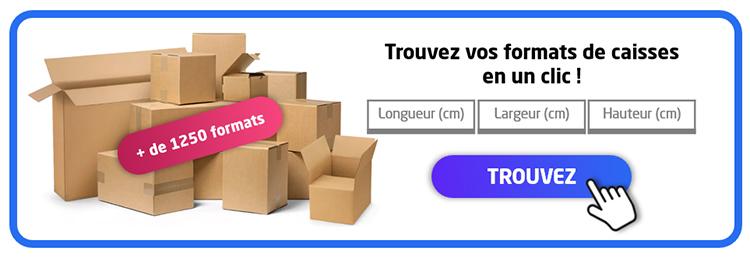
► 4. Reuse and refill targets for e-commerce packaging
PPWR requirement: in addition to recycling, reuse andrefill play an important role in the sustainability of packaging. The PPWR will contain clear guidelines on the design of reusable packaging and the frequency with which it should be reused. According to the European Packaging Act, 10% of packaging (of non-food products for e-commerce) must be reusable from 2030. By 2040, this percentage should reach 50%. This means that we as an industry have to look for a new way of dealing with packaging…
RAJA’s solutions: to ensure the reuse of packaging, we need to be able to adapt the returns logistics on a sufficiently large scale. The sector is working hard behind the scenes to close this gap. Thanks to the Green Deal in Flanders, RAJA Belgium (soon also in the Netherlands) is committed to being one of the first players to roll up its sleeves in this project.
RAJA is actively working on new solutions to bring sufficiently strong, easily foldable and compact packaging to the market for possible return. Preferably, this type of packaging will also be renewable and recyclable. We are particularly interested in innovations based on cardboard. You can read in the box below why we choose cardboard over plastic. We plan to launch the first commercial solutions on the Belgian and Dutch markets in the course of 2023. Can’t wait and want more information now? Contact us and we’ll be happy to explain our progress (012 260 280 or sales@rajapack.be).
Through all these efforts, RAJA is able to ensure that significantly less pure raw material is needed throughout the production and use chain, and that the amount of residual waste is significantly reduced. This allows us to contribute to a circular economy and, together with our customers, to reduce the pressure on the overall consumption of raw materials.
Tests show that cardboard has more potential than plastic to become a reusable packaging solution. Here's why:
- Cardboard is a strong, yet easily foldable material.
- The production cost of designing new cardboard packaging is relatively low. In addition, the time between the prototype and the finished product is very short.
- Cardboard is often a recycled material in itself and is easy to recycle afterwards. In case of loss, cardboard decomposes naturally and quickly.
- Production and know-how can be centralised locally.
- Cardboard is eco-responsible, renewable and is the best recycling fraction among almost all EU Member States.











